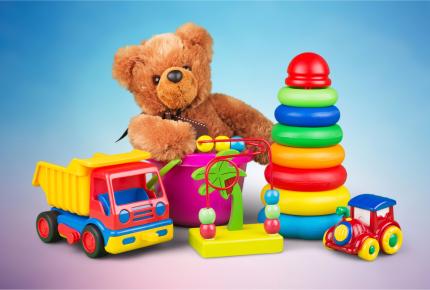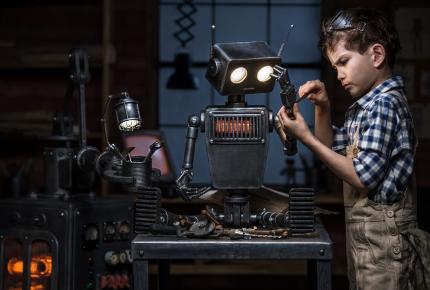
Toys for children: safety matters
Hundreds of new toys are released each year. Those who buy them, whether in stores or online, expect these toys to be fit for use and safe to use. Whether it concerns the origin of the product, its quality or its safety ... here is what you need to know before offering a toy to a child.
Although online sellers and brands are trying to control the quality of the products they sell, faced with the myriad of products available some unsafe toys slip under the radar.
And to find out just how many this might be, in 2018 France's Directorate for Competition Policy, Consumer Affairs and Fraud Control (Direction Générale du Commerce, de la Consommation et de la Répression des Fraudes), ran tests, randomly selecting 46 Christmas-specific products. From fairy lights and toys, to stuffed animals and costumes, a sample of decorations and gifts were put to the test:
“All toys put to market must be manufactured in such a way as to pose zero threat to children's safety,” explains Sophie Petersheim, Head of Marketing for Southern Europe in Bureau Veritas’ Consumer Goods department. As a result, toys must comply with the requirements of the regulations in force, notably the European Toy Safety Directive 2009/48/EC.
Products are subject to mandatory testing conducted by independent bodies such as Bureau Veritas. And the procedure is stringent: “Before a toy can be sold, the manufacturer is required to identify and eliminate any hazard that their product might contain, in particular physical, mechanical, chemical and electrical hazards, as well as flammability.”
Electric and electronic toys
A growing number of electric and electronic toys are being brought to market. These call for additional testing to check batteries, LEDs, short circuits and more. As Sophie Petersheim explains, “we check whether children have access to the batteries, for example, to ensure there’s no risk of swallowing or choking hazard.” These tests also cover radio frequency and electromagnetic compatibility (EMC). The goal is to measure EM waves and identify any interference transmitted or received by the toy in question.
Connected toys
What about toys with cameras and products that use Wi-Fi connections? In the Internet of Things (IoT) era, even toys are now hooked up to networks. And that makes them a potential source of concern. “Like any other connected item, connected toys are potentially at risk of hacking. The European Cybersecurity Act was adopted in March 2019 and applies to all connected objects. LCIE (a subsidiary of Bureau Veritas) created a framework for testing safety levels in this specific product category,” according to Sophie Petersheim. These tests are conducted via the P-Scan cyber security test bench developed in partnership with the CEA.
Another sticking point involves chemical substances. The tests carried out make it possible to know if no dangerous chemical is present in the toy.
Consumers should therefore be vigilant when buying children's toys. They are recommended to check the proofs of conformity of the product. In the event of any doubt, shoppers are advised to contact the manufacturer directly to request this information

